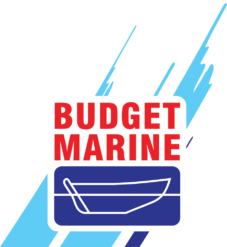Seacocks! Nothing controversial there, one would think, but judging some of the installations I have seen, you couldn’t be more wrong.
In these ‘Budget Blogs’, I like to include personal experiences, so I’ll begin with the day a seacock sheared off in my hand.
In the late 90s, my wife and I were slaves to a 1932 wooden boat that kept us flat broke. Replacing planks and frames was the priority at every haulout and to my shame (and empty pockets) other things tended to be overlooked. Having replaced several, while hauled out in a lovely boatyard on Puerto Rico’s east coast, we were ready to relaunch. A friend had flown in from Europe for a sailing holiday and arriving at the yard was extremely upset to find a big hole in the side of the boat, so we were under pressure.
After working day and night, finally the travel lift lowered us into the water and while my wife and our friend went to buy food, I prepared the boat for an immediate departure on their return. I reached under the engine to open the bronze seacock and the whole thing came off in my hand.
I shouted for help but no one heard and so lay across the engine for almost an hour with one hand over the two inch hole until the girls came back. Unable to re-haul because the yard guys had gone for the weekend, I was forced to jury rig a repair in order to save something of our friend’s holiday, but that’s another story.
Here are some startling figures: A two-inch hole one foot below the waterline results in 78 gallons of water per minute entering the boat. With every minute the hole isn’t plugged, you are adding around 650lb (3.785kg) of weight to the boat. A two-inch hole two feet down lets in 111 gallons per minute. That ratio increase as the boat sinks lower in the water.
Bronze has long been the preferred material for seacocks and thru-hull fittings and this is the only time that I have had one fail in a boating career that spans some 40 years.
Electrolysis and the bonding of bronze seacocks is a contentious subject and one that’s been written about, and argued over, extensively. I’m not brave enough, or knowledgeable enough, to opine on the subject. But I do know that a bad job of bonding can accelerate corrosion, so study carefully before committing.
None of my boats have ever had bonded seacocks.
Our steel boat had all bronze seacocks, and bronze and steel are not a good mix. The one in the head was the tapered plug variety, rarely seen today. It had a flange and was bolted right through the hull. It sat on a non-conductive gasket with carefully made non-conductive washers and inserts preventing direct contact with the hull. That seacock was the only one I didn’t replace, having replaced all the other fittings with Marelon.
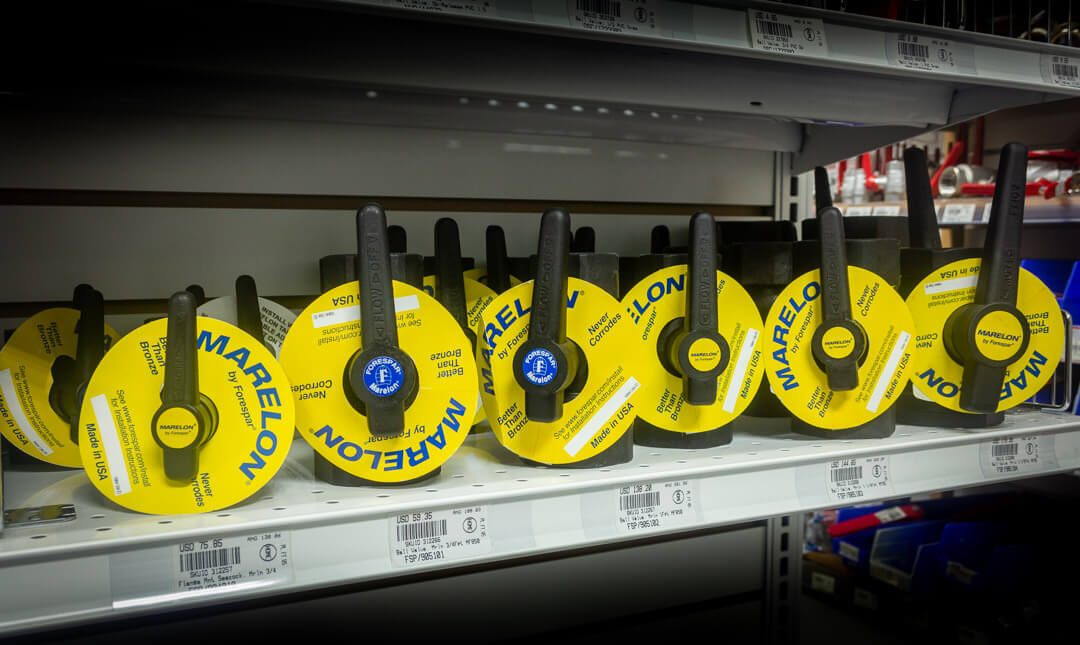
Marelon is a high strength, polymer composite, developed as a solution to electrolysis and corrosion problems associated with bronze and brass plumbing fittings and is UL/ABYC approved and ISO certified for used above or below the waterline. Marelon also has the advantage of being compatible with bronze fittings, i.e., Marelon seacock on a bronze tailpipe.
What about brass, they’re cheap? Er … you really shouldn’t. You really, really shouldn’t. Gate valves are also a no-no. Buy the best quality bronze fittings you can afford, inspect them regularly, and sleep easy in your bunk.
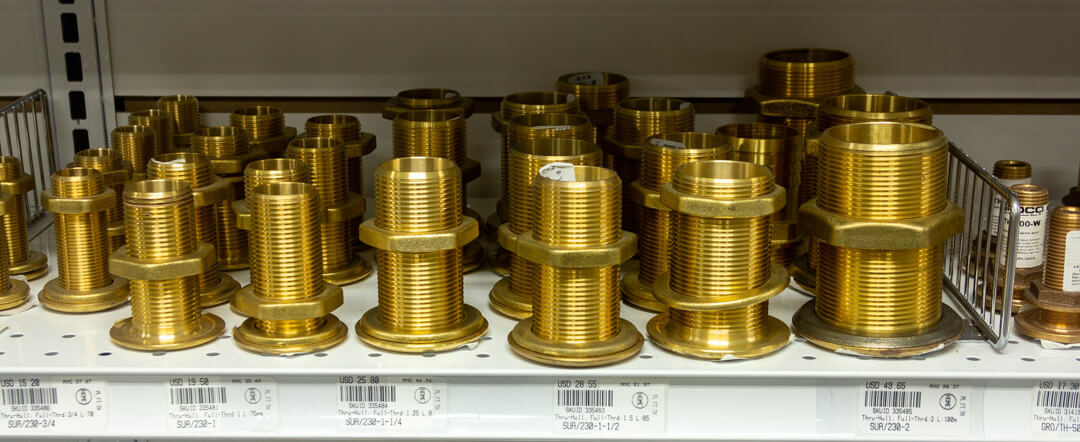
Bronze thru-hull fittings 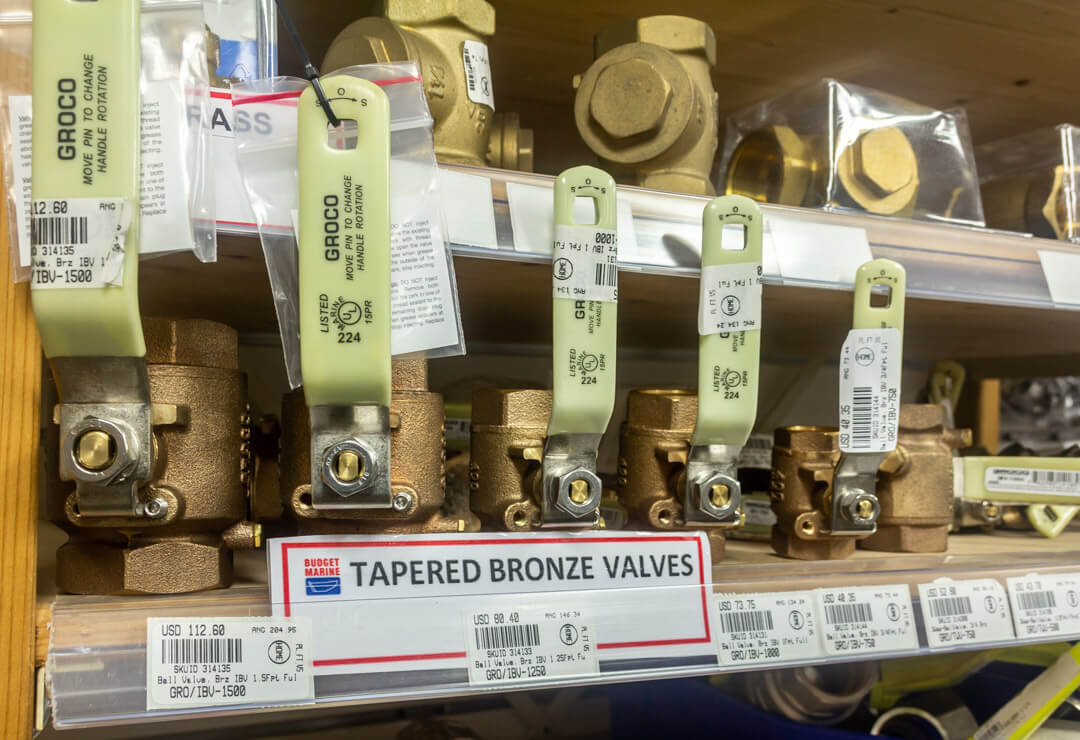
Bronze fittings 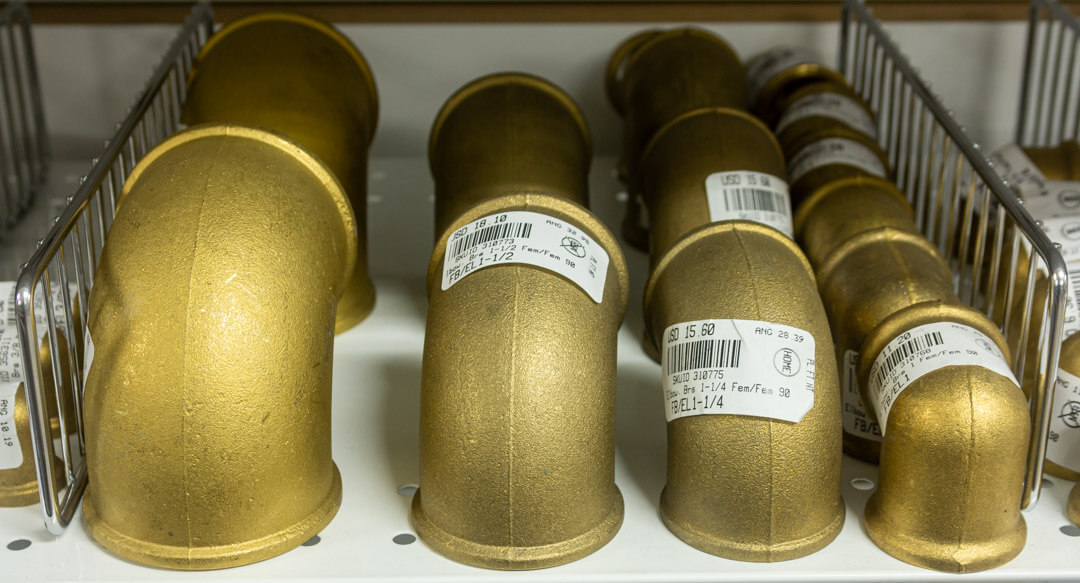
Bronze elbows 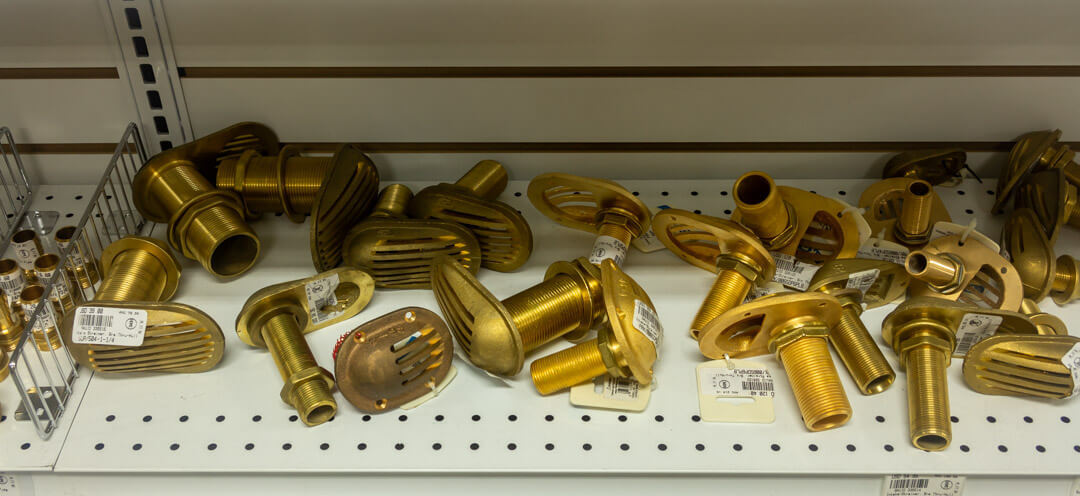
Bronze thru-hull basket strainers 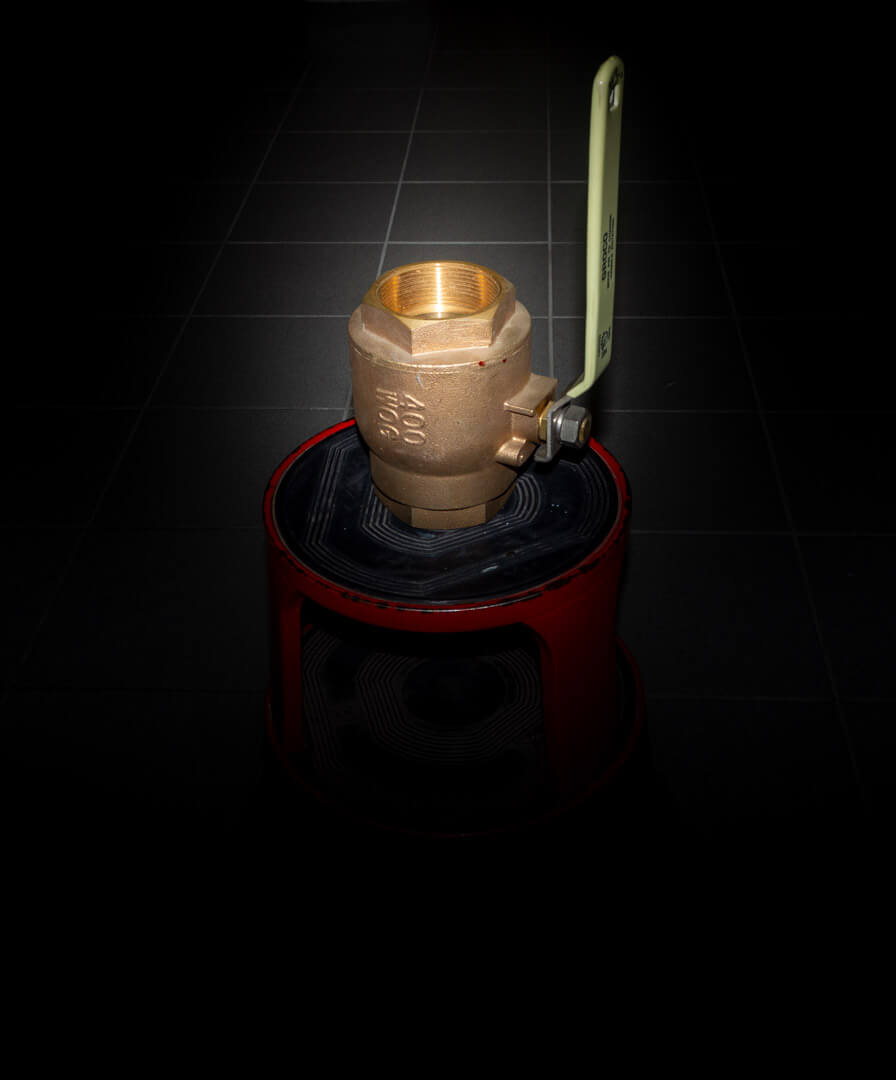
Bronze fittings come in many sizes
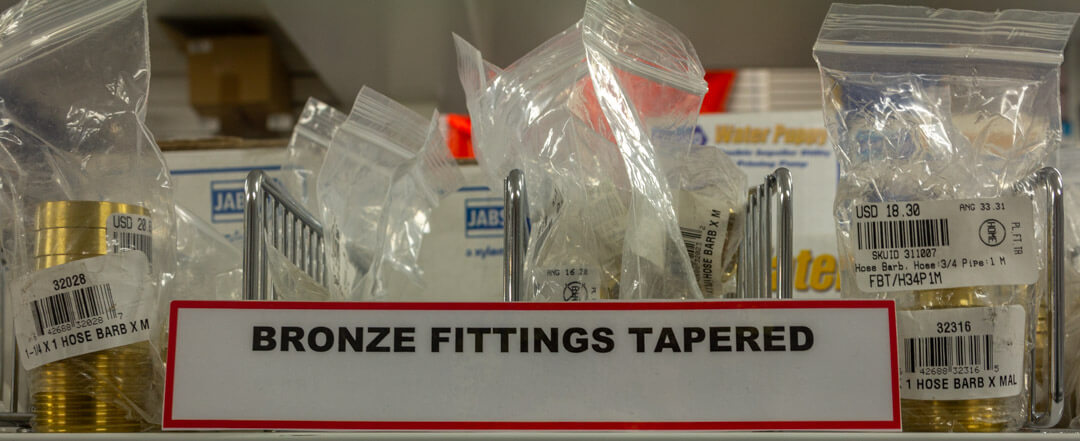
Tips:
Regularly opening and shutting the seacock will keep it free.
If you strip and grease seacocks during haulout, avoid using any grease containing graphite. Graphite is at the top end of the galvanic scale and could lead to galvanic corrosion of bronze and stainless parts.
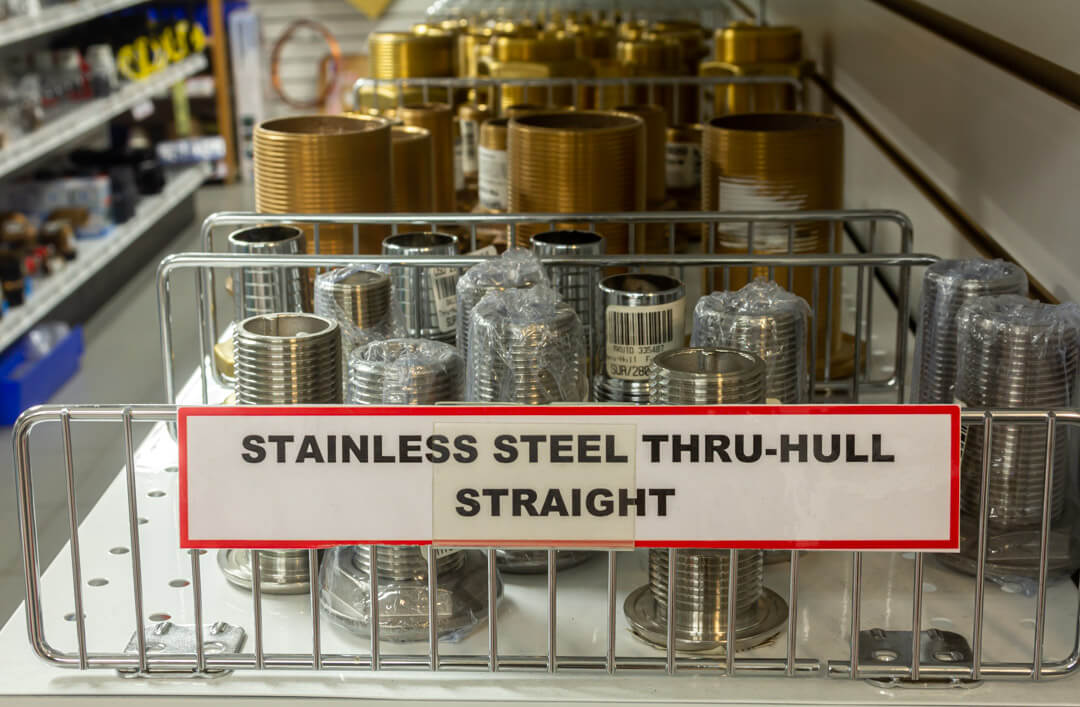
MEGA TIP:
Keep an appropriately sized soft wooden bung by every seacock. You can whittle these yourselves or buy them ready made in a bag of various sizes. Drill a hole through the thick end and tie the bung to the seacock with thin twine. I had wooden bungs on my boat when the engine seacock sheared off, unfortunately they were deep stowed in the forepeak.
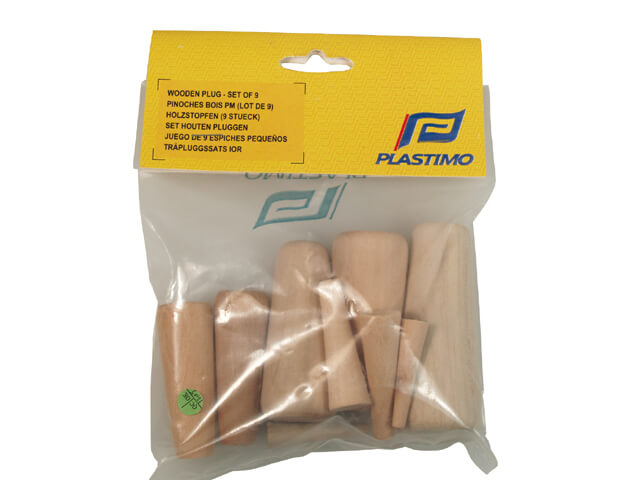
Author: Gary E. Brown
Contact and website: garyebrown.net
Product List
Bronze thru-hull basket strainers
Photos of fittings: OceanMedia
